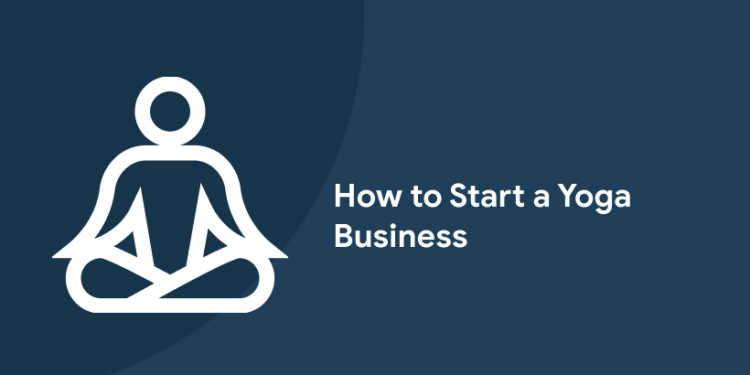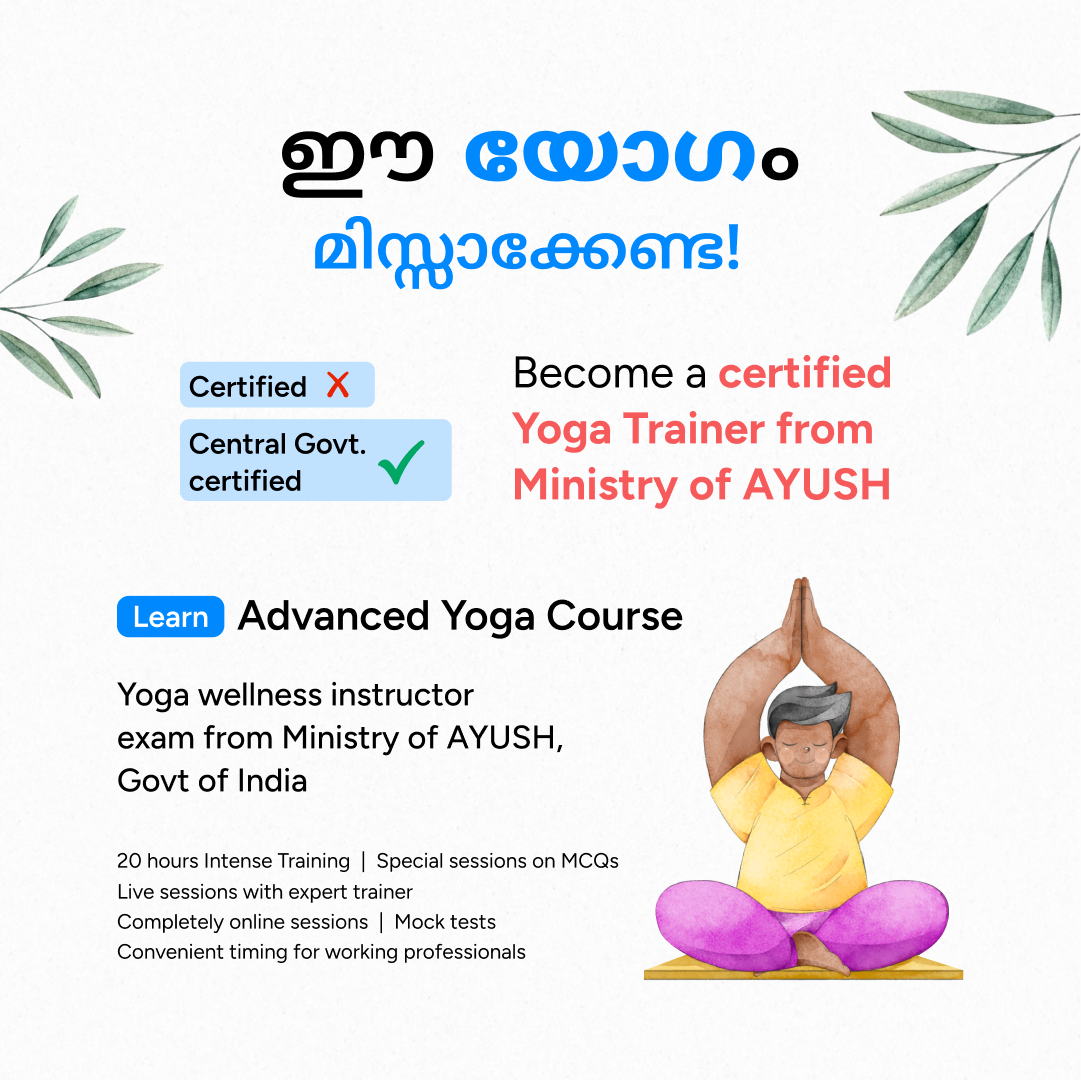Table of Contents
Yoga has grown incredibly popular and undergone numerous modifications and adaptations. For instance, yoga was originally taught one-on-one, now group classes have become the standard. The name yoga has its roots in ancient India and is derived from the Sanskrit root yuj, which means “to yoke” or “to unite”a long cry from pricey goods and workouts that burn fat!
The main purpose of yoga, no matter how you dress it up, is to acquire a sense of spiritual enlightenment and release from pain. Although there are now countless variations on this age-old practise, almost all focus on bringing together the body, mind, and breath to bring about a beneficial shift in consciousness. These ideas will always be at the centre of your yoga business, no matter what form it takes. As a result, few businesses are as satisfying and ultimately good for the world.
Get Certified, Get Confident! Join Our Yoga Teacher Training Course!
Yoga Certification
You do not need a certification to begin teaching yoga, but you may have difficulty getting a job or clientele if you do not have one. You must hold a minimum 200-hour RYT (Registered Yoga Teacher) certification in order to precise at many studios. Before moving on to any higher designations, you must first earn the RYT 200 certification.
There are 6 designations in total:
- RYT 200
- RYT 500
- E-RYT 200 (Experienced Registered Yoga Teacher)
- E-RYT 500
- RCYT (Registered Children’s Yoga Teacher)
- RPYT (Registered Prenatal Yoga Teacher)
The non-profit organisation Yoga Alliance, which has more than 90,400 members, has given its approval to all of these certificates. The organization’s goal is to “promote and support the diversity and integrity of the teaching of yoga.”
You are qualified to submit an application for a more advanced teacher certification after earning your RYT 200 certification. For instance, the E-RYT 200 designation, which stands for Experienced Registered Yoga Teacher, calls for 1,000 hours of classroom instruction.
Which benefits come with a yoga instructor certification?
1: Which of these is the primary goal of yoga practice?
Since many studios demand certification, becoming a qualified yoga instructor will open up more work opportunities for you. If you work as an independent contractor, you can find it simpler to draw in clients because of this status. Consider it this way: Would you pick a doctor without a degree who practises solely by watching online videos? No chance.
Based on their training and expertise, you would want a professional to offer the greatest care. Yoga education follows a similar pattern. For the money they spend, yoga students deserve the greatest possible experience. In order to locate the best instructor available, they will conduct research. They’ll most likely base their choice on the information at their fingertips. See more about the marketing advice below!
Based on their training and expertise, you would want a professional to offer the greatest care. Yoga education follows a similar pattern. For the money they spend, yoga students deserve the greatest possible experience. In order to locate the best instructor available, they will conduct research. They’ll most likely base their choice on the information at their fingertips. See more about the marketing advice below!
Additionally, obtaining certification establishes your expertise in the yoga practise and gives you respect on a global scale.
Although becoming a member of Yoga Alliance is independent from earning a certification, doing so gives you access to a network of people who can support you as you pursue a career in yoga. The following membership perks are listed on their website:
- “Marketing in the RYT directory,” which means you’ll be identified as a licenced teacher so that prospective students can find you.
- “Free and online workshops are available.” Yoga Alliance maintains a huge collection of programmes to assist yoga instructors in their teaching and professional development.
- Yoga Alliance will get in touch with you on news stories that have an influence on the yoga community as “advocacy alerts,” they say.
- Invitations to neighbourhood events. You can use this to connect with other yogis in your region.
“Insightful publications” on yoga as well as exclusive savings on accessories and classes.
Become a Certified Yoga Instructor
Yoga Teacher Training Course by Entri App: Master authentic yoga techniques, earn certification, and build a successful career as a professional yoga instructor.
Join Now!What can you expect in a yoga instructor certification program?
New yoga instructors are taught the fundamentals of practising and instructing yoga in every RYT 200 programme. Anatomy, several types of meditation (Asanas and Pranayamas), the history of yoga, how to organise a class and instruct poses, and the ethics surrounding the business of yoga are all topics that will be covered in the course. More information on what is regarded as ethical business conduct with regard to teaching yoga may be found here.
Depending on the institution you select, these subjects may change, but the main goal of any RYT 200 programme is to instruct you in the rituals and practises of yoga and provide you the skills you need to teach others.
Your Journey to a Fulfilling Yoga Career Starts Here! Get Free Demo Classes Here!
How to market new yoga business?
The simplest method to do this is to publicise the fact that you’re launching a studio! Find out what you need to do to join by going to your neighbourhood Chamber of Commerce. Stop by any nearby medical offices to see if you may place some flyers or business cards in the waiting area.
The same goes for any local gyms (though it’s worth asking). They might not permit this because it might compete with the services they provide. Again, if there are spas nearby, it would be a wonderful location to leave company information.
Select areas where this demographic might be found after considering your audience and the typical clientele. Don’t restrict yourself, though! Even while the demographics might seem obvious, you might find that yoga enthusiasts come from locations you never expected. While remaining inclusive of everybody, be acutely aware of who your target audience is.
Make a social media presence. Although Facebook is very popular, you should also check out Instagram and TikTok where you may share photos and videos of your yoga sessions and positions.
Create a Google business profile, please. This will enable customers to find your company when they search for “yoga studios near me” online. You want your company to show as an information box that includes your address, contact information, website, and a spot for customers to read and leave reviews.
To draw in more customers, some might think it’s advantageous to provide an introductory discount. People nearly always expect an offer these days, whether it be a discount or value-added service. As an incentive for signing up for a class or membership, you can offer a ‘buy one class, get one free – or at a reduced rate’ deal, a water bottle or apparel branded with your studio name and logo (a perfect way to get your name out there), a healthy snack bar, a yoga mat or something similar.
How much money can be made owning a yoga studio?
A similar question would be, “How long is a piece of string?” In the end, a yoga studio’s profitability varies greatly and depends on a variety of things. Your target audience, the location of your studio, the services you provide, the cost of rent and other costs, and how you establish your pricing are all important factors.
Yoga business owners who create thorough business plans, analyse their local market and rivals, and set specific financial goals are more likely to be successful than those who don’t. So make sure everything is ready before opening a yoga studio.
| Also Read | |
| Yoga Trainer Job Opportunities Abroad | |
| How to Get a Yoga Instructor Job Abroad | |
| Business Strategies for Yoga Teachers |
Become a Certified Yoga Instructor
Yoga Teacher Training Course by Entri App: Master authentic yoga techniques, earn certification, and build a successful career as a professional yoga instructor.
Join Now!Some essential steps to starting a yoga business
1. Get your Yoga certification
Technically, you don’t need credentials to start teaching yoga, although getting them is highly advised. You could not leave the correct impression on clients or draw in new ones if you lack credentials.
Although it can be enjoyable, yoga is a serious endeavour that carries a great deal of responsibility. Therefore, make sure to obtain your credentials before creating a company strategy.
2. Decide whether you want to start a studio or be a sole proprietor
There are many other possible possibilities for running a yoga business than owning a studio, and these options can give you useful experience. If your aspirations are lofty, consider them stepping stones on the way to opening your own studio. You can work for a yoga studio or private health club, the latter of which even offers health and retirement benefits, as a sole proprietor and teach private clients on an individual basis.
If you decide to launch your own physical business, keep in mind that you will have a lot of obligations. There are several factors to carefully examine, including rent and utility costs, personnel management, and ensuring your firm complies with zoning rules, but more on this later.
3. Build your client
Developing a trustworthy customer is essential whether you operate a studio on your own or as a sole proprietor. Working for a reputable yoga studio allows you to develop a loyal following of yoga practitioners in addition to gaining knowledge that is essential to the practise of yoga.
In that case, you’ll already have a clientele from which to choose clients once you do decide to open a studio. Giving classes away for free or in exchange for donations is another way to raise interest in your field.
4. Decide what style of yoga you want to teach
The many different forms of yoga practises include Hatha, Vinyasa, Iyengar, Bikram, Ashtanga, and Yin. Make sure you are knowledgeable about the forms you will focus on before establishing your yoga business. Find out which types best fit your ethos, what you’re equipped to teach, how well-liked they are, and how likely they are to draw in new customers.
Your Journey to a Fulfilling Yoga Career Starts Here! Get Free Demo Classes Here!
5. Pick a name that fits your business
Brand names can be deceptively powerful. There is a reason why young children can name well-known companies like Coca-Cola and Nike quickly yet struggle to identify images of significant historical figures. The name you choose for your yoga business should reflect both your basic values and the many yoga types you teach, therefore it is crucial to give it careful consideration. In addition to English and Sanskrit, you also have centuries of tradition at your disposal, so you will never be at a loss for what to do.
6. Draw up a business plan
It may not seem like the best of bedfellows for scrupulous business-minded thinking and an ancient Hindu practise geared to enhancing consciousness. However, you need create a thorough business plan if you want your yoga practise to be profitable and enduring. There are numerous business plan templates and materials online to assist you in creating one, even if this may not be an appealing prospect for everyone.
A standard business plan will give you a useful road map to help you in the beginning of your firm. An executive summary, a marketing study, an operations plan, and other important topics are covered. In the end, developing a strong business strategy is crucial to ensure the success of your yoga studio in the future.
Okay, so you have your credentials and have chosen a memorable name. You’re now prepared to make the leap and open your own physical location. But before you start your business, make sure you carefully analyse all the obligations and factors involved in operating a yoga studio.
7. Use an online booking software
The days of relying on print advertisements or taking reservations over the phone are long gone. Nowadays, web platforms let you accept reservations online, easing the reservation procedure and allowing you to concentrate on what you do best—teaching yoga! They also have a ton of other helpful features, such as marketing tools, customer intake forms, and email automation.
Conclusion
As we’ve seen, starting a successful yoga business is no easy task. However, there’s a good chance you’ll open a well-liked yoga studio if you channel your enthusiasm for the age-old practise into economic success. It only requires serious consideration, investigation, and a dedication to uphold your core principles. Cross your i’s and dot your t’s and tell everyone about this amazing, therapeutic practise!
Yoga Teacher Training – Learn from Experienced Instructors! Get Free Demo Here!
How to Start a Yoga Business: FAQs
Q1. What do you need to start a yoga business?
Ans: There’s no need to rent a studio and spend a lot of money to get started.
- Get your certification.
- Pick a specialty.
- Pick a name and get a logo.
- Put together a business plan.
- Create a strong website.
- Keep marketing and generating clients.
Q2. Do you need a qualification to be a yoga instructor?
Ans: The required minimum training to teach yoga is a 200-hour yoga teacher programme. However, continuing education and professional growth are necessary to evolve into a competent, gifted yoga instructor.
Q3. Can you teach yoga without certification?
Ans: A licence is not legally required to instruct yoga. You cannot, however, accomplish some things without the qualification. You cannot obtain yoga instructor insurance if you don’t have a yoga certification. You can be held accountable for any accidents if you don’t have yoga teacher insurance.
Get Certified, Get Confident! Join Our Yoga Teacher Training Course!























